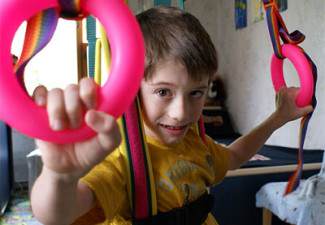
Cerebral palsy is a condition that has been the target of relentless study by medical researchers for many years. These talented people have made remarkable progress in our fight against this condition, and new techniques and strategies are being formulated all the time that have proven to be of benefit to those who are dealing with cerebral palsy. Unfortunately, the unavoidable reality is that we still have a long way to go. There is no cure for cerebral palsy nor is there any treatment available that reverses it. Therefore, children who are diagnosed with this condition will face a lifetime of adjustments and challenges that could change over time.
One of the techniques that was discovered not too long ago dealt specifically with children who suffered from spastic cerebral palsy. This type of cerebral palsy involved involuntary muscle movements and other symptoms that made it difficult for patients to be able to move around and to handle everyday tasks that most of us take for granted. These tasks include getting dressed, brushing our teeth, grooming and eating.
However, a surgical procedure known as selective dorsal rhizotomy (SDR) came about several years ago that was designed to treat the spasticity that children with spastic cerebral palsy are forced to endure. When it was first attempted, it did provide immediate benefits to patients but skeptics wondered how long those benefits would last. There had been other techniques that came about in the past that ultimately proved to be nothing more than a quick fix that did not last long.
Researchers in Canada have attempted to answer that question with regards to spastic dorsal rhizotomy. They studied data on 102 patients in a database at McGill University who had undergone long-term follow-up care. The researchers found that the vast majority of children who had undergone SDR enjoyed relative freedom from muscle spasticity all the way through adolescence and into early adulthood. That was as far as the study could go at this point given the amount of time that this procedure has even been done on live patients.
As a result, SDR was given a tremendous boost by this study, and the researchers would like to not only continue to follow the patients who have had this surgery done but to look into the possibility of expanding it into other cases. If a child with spastic cerebral palsy is able to have his or her spasms limited in number and intensity, it could change his or her entire life for the better both physically and psychologically.
We have been serving families of children with cerebral palsy as New York medical malpractice lawyers for 42 years. We help families whose children suffer brain injuries while being born because of mistakes made by the medical professionals who were overseeing these births. We hope that this study and this surgical technique are both indications of a new set of possibilities for children who face this lifelong challenge.

